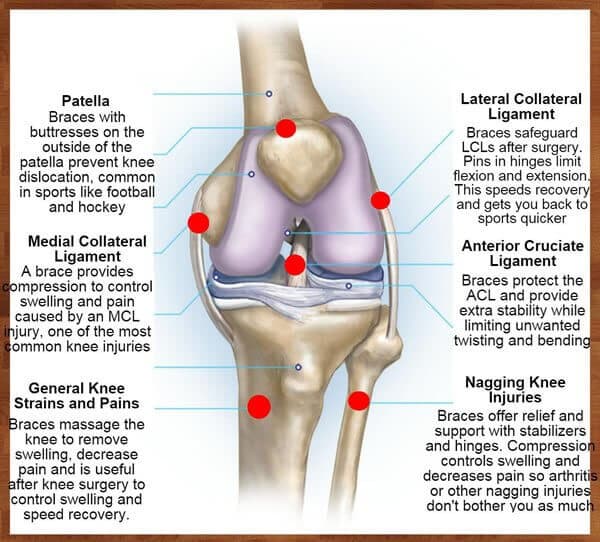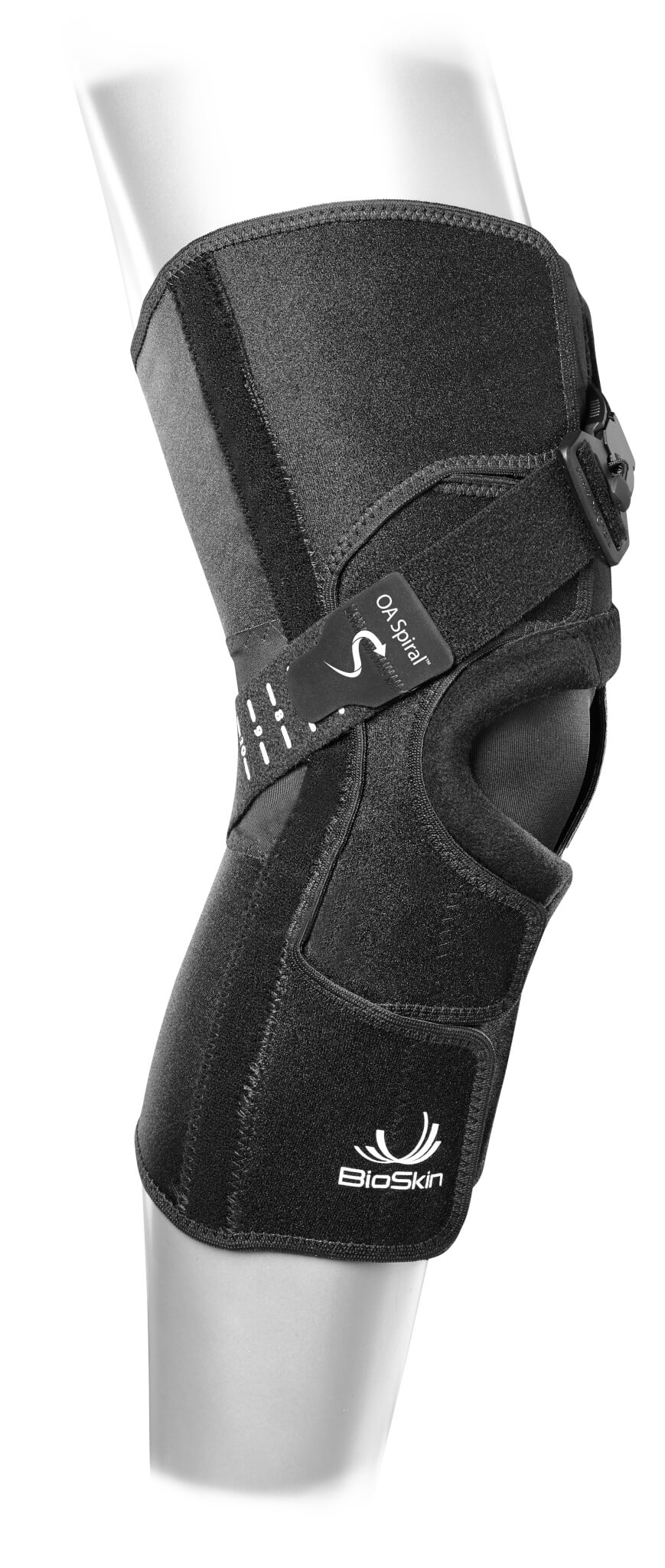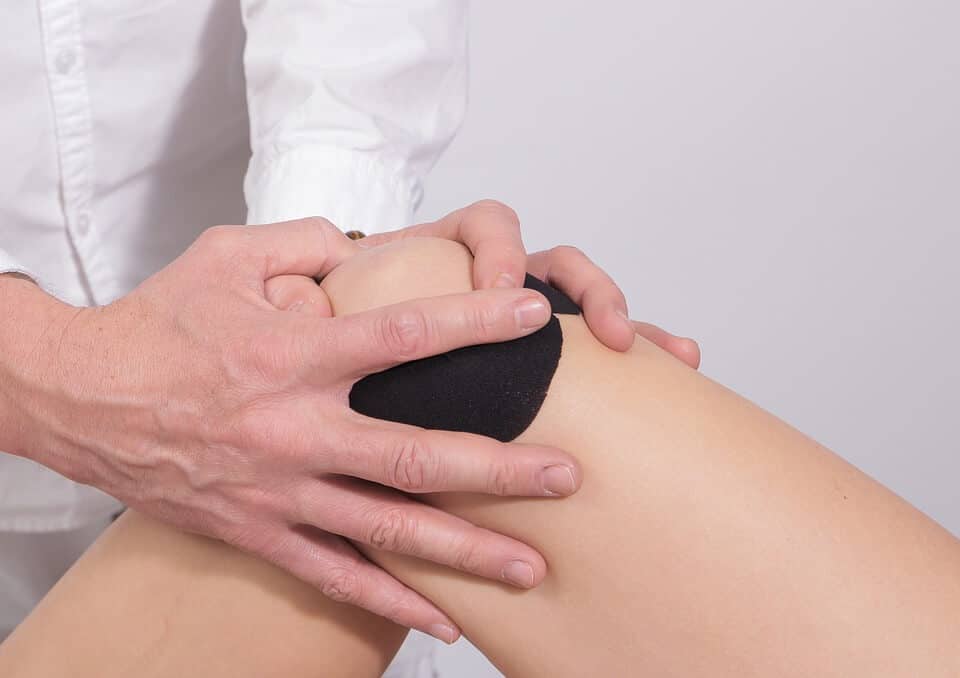Six Knee Brace Questions And Answers
Knee braces, while appearing simple at first glance, can be complex and baffling objects to many patients upon further inspection. That’s why we’ve put together six of the most common knee brace questions that patients may ask and some straightforward advice you can give to them.
What will wearing a knee brace do?
All patients want to know why any treatment, support, medicine or exercise will help them feel better and stay better, so this is a great place to start familiarizing them with knee support products.
There are different knee support products for different purposes, but for the sake of helping a patient understand the basics, start with a general breakdown of how they work. Knee braces support the knee’s ligaments by regulating the movement of the joint and guarding against unusual movements during recovery from injury. They can facilitate recovery in a variety of ways such as by using warmth and compression to reduce pain and inflammation, correcting improper and damaging movements or protecting and supporting the knee against excessive force or twisting out of position.
Does it matter what kind of knee brace I have?
To answer the question, yes, it does matter, but it’s important to go deeper with patients and explain to them what the differences are and why they are important.
While many patients will follow your instructions to the letter, there are some who will not. If they are uninformed about the wide array of knee braces and their specific purposes, they are much more likely to believe they can decide for themselves which brace is suitable for them and chose the wrong one, pushing their recovery back and potentially making the injury worse.
While there are hundreds of different knee support products out there, all with slight variations geared to helping patients with specific problems, there are general classifications that you can explain to patients before making a particular recommendation.
The four main knee braces to briefly outline with patients are:
- prophylactic braces, designed with the aim of preventing knee injuries. They are mostly used in sports like rugby or basketball in which there is frequent bodily contact with other players.
- There are then functional braces, which support knees that are already injured.
- Next, there are rehabilitative braces, which restrict potentially harmful movements of the knee during the recovery period after either surgery or an injury.
- Lastly, there are unloader or offloader braces, which provide relief from conditions like knee arthritis.
When should I use a knee support and how should I put it on?
Timing is everything, as they say, and it’s especially crucial when it comes to wearing a knee brace. That’s why it’s very important to help patients understand all the ins and outs of how to properly use a knee brace, including the logistics of putting on the product.
Give very detailed instructions on when the support should be used and when it is best to shed the brace and leave it behind. Depending on the type of knee support, these instructions will be different, but help the patient get a definite sense of if they should wear the brace all the time or only when doing certain activities, including sports, rehab exercises, daily transport from place to place, sitting and sleeping.
The next step is to help patients get comfortable with putting on and taking off the brace. One of the worst things that can happen is that a patient is unsure of how to properly put on a brace and does so incorrectly, causing further injury or a lack of recovery. Have very thorough instruction, write it down or invite the patient to bring the brace in and go through the motions with them.
How should I clean and take care of my knee support?
This is probably one of the most commonly asked knee brace questions.
After so much explaining, it should be clear to the patient by now that the knee brace is a crucial part of the recovery process, almost like another limb, and that (s)he should treat it with diligent care. Now it’s up to you to give them a guide to doing just that.
Knee braces don’t often come with a set of care instructions and so it is usually up to the physiotherapist explain how to best maintain the knee brace so it works well and it works for as long as the patient needs it, especially as knee braces get a lot of mileage and stress put on them. A few basic tips for patients include inspecting the brace frequently for wear, regularly cleaning it with household soap to help maintain the fabric and keep it clear of bacteria, and covering exposed metal to reduce the risk of injury (including to others). It’s also good to explain the different price points and material that braces are made of to help the patient understand the different care and maintenance that is required with each, along with the effectiveness and durability of each type of knee brace.
How long should I wear my knee brace?
The first four knee brace questions and answers will undoubtedly help patients to get a running start when using a knee brace as they provide a great starter’s kit for first-time brace wearers. However, it’s not enough to just give patients only half the pieces in the puzzle; you also need to explain how to gauge the effectiveness of the knee brace and how to listen to the body when measuring the impact of the brace.
The first thing to do is to help patients establish expectations; a week of wearing the knee brace won’t mean a full recovery and the truth is, most knee braces are needed for some time. This will help patients to avoid getting frustrated or feel negative emotions if they don’t have quick results.
Guidelines for the use of knee braces depend on a number of factors. The most important is the amount of activity on the knee ligaments in combination with the muscles that are designed to actively absorb that activity. If the injury and use of the brace is mainly for sports, it depends on the sport being played. Sports which involve a lot of turning and jumping pose an added risk.
At the end of the day, there’s no clear-cut answer as to how long a brace needs to be worn, but it is important to let the patient know to take note of any concerns or improvements and bring them to you frequently. Frequent visits will mean that the brace is used properly and isn’t worn a minute too long or too short.
Do I still need to do exercises or rehab if I wear my knee brace?
The short answer is yes, of course. Wearing a knee brace isn’t a shortcut or a silver bullet to getting 100 per cent healthy and patients should be very well-informed of this. While knee braces can be an essential part of the recovery and rehabilitation process, they are only part of a much larger set of tools to help the body get back to full health. It’s important that the patient knows exactly what these other tools are, how they work in conjunction with knee braces and what their impact is on a quick, effective recovery.
It’s also crucial to ensure the patients knows that wearing a knee brace doesn’t make him or her invincible. Injury remains a risk even while wearing the brace. To fully recover from the injury and avoid a future recurrence, the patient needs to also focus on stretching and strengthening the joint as well as improving technique.
Providing the patient with carefully considered answers to the knee brace questions in this post will put them on the road to a quicker and more complete recovery.
For more information on how to help patients stick to their home exercise plans, especially when wearing a knee brace, check out our post on compliance at home.
If you run competitively or for occasional exercise, please consult our post on choosing a knee brace for running for more guidance on this subject. Basketball players can obtain similar guidance relevant to their sport from our post on how to choose a knee brace for basketball.









Hi, I’m a 22 year old female and I’ve just recently found that I may need a knee brace for my leg condition called genu Valgum or knock knees. Typically, would I wear this non stop for a period of a few months or something similar to, for example, around 8 hours a day? I understand every persons condition is different but even an estimate would help me so much as I’m freaking out. I’m currently on the search for a good doctor who can help me with my questions but haven’t been able to find any.
Braces may be a consideration for knock knees only in the case of young children whose bones are still growing. For a young adult such as yourself, a doctor would likely choose other options. However, before you make your decision on a course of treatment, please consult a physician.
I hope you will soon find a doctor who can help.
When I bend my knee hurts is this need a brace
Hello – Your knee pain can be caused by several reasons, only some of which may be treated by the appropriate brace. Others may require other types of treatments. We recommend you visit your doctor and follow his/her advice. Should he or she recommend a brace, we will be happy to help.
Knee pain when bending may be a sign of a knee strain or other injury that a brace can help to treat. However, it is very important to seek medical advice before deciding whether to get a brace. Your doctor can not only help you decide whether a brace is right for you, but can also assist you to choose the correct brace if this is indeed the right way to treat your problem. If you decide to wear a brace without seeking professional help, you may make the problem worse over time. Visit your doctor before taking the next step.
Great guide. I am a weightlifter so whats the best brace for me?
Hello – thanks for contributing. We will be publishing a post on this subject in the next few weeks but, in general terms, a good knee brace for a weightlifter should stabilize the joint in all directions and keep it warm throughout the workout period. A well designed knee sleeve is often the best choice in this situation. Stay tuned for our post, which will have much more detailed information.
I suggest a non-medical I don’t know what the brand is that if you can get it at CVS
What would happen to me, if a wore knee sleeves for the rest of my life, basically like wearing a pair of socks? Is there any repercussions?
There are no serious repercussions if you are not injured and decide to wear a knee sleeve purely as a precaution. A knee sleeve will provide compression and warmth, both of which will reduce the risk of injury if you participate in sports or other physically demanding activities. However, if you are experiencing pain or have suffered an injury, you should see your doctor before deciding whether you need to wear a sleeve or any other type of support.
As a weightlifter, you will be putting a lot of pressure on your knees, and knee strain will be an injury you will want to guard against. There are many choices of knee brace that will reduce the risk of a knee strain, some of which you will find on this site. Ideally, you should look for one that will also provide compression and warmth in addition to support, as these factors will further reduce the risk of injury. Knee sleeves will provide compression and warmth and may be more economically priced than a hinged knee brace but may lack the support of a brace. You will find a number of suitable knee braces or sleeves here, whether you search in our Bio Skin, Mueller, McDavid or LP Support range.